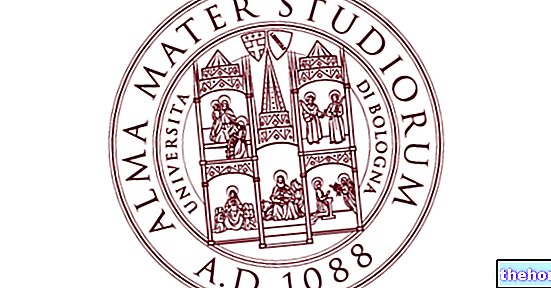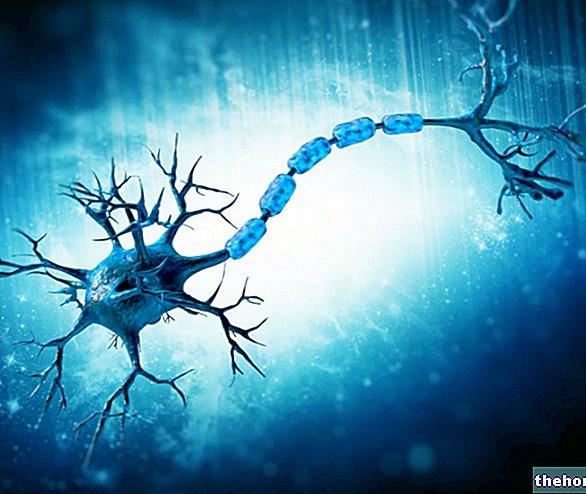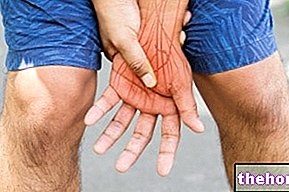Description of the disease
Guillain-Barré syndrome is a complex disorder of the peripheral nervous system, the result of an "abnormal and exaggerated autoimmune response, probably triggered by a" viral / bacterial infection. The characteristic symptoms of Guillain-Barré syndrome - analyzed in detail in the previous article - are weakness and progressive paralysis of the lower and upper limbs.
In this concluding discussion, the attention will be turned to the analysis of the diagnostic strategies and to the description of the therapies currently available for the treatment of the Guillain-Barré syndrome.
Diagnosis
Progressive limb paralysis is one of the characteristic symptoms of Guillain-Barré syndrome. As we know, paralysis is a recurrent symptom in numerous pathologies, therefore the differential diagnosis between Guillain-Barré syndrome and stroke, encephalitis, poliomyelitis, vasculitis, lead poisoning, myasthenia gravis, botulism and hypokalaemia must be made.
A case of suspected Guillain-Barré syndrome can be ascertained using several diagnostic strategies:
- Rachicentesis: most patients with Guillain-Barré syndrome have a "high concentration of protein in the CSF, NOT associated with any increase in CSF cells.
- Antibody screening
- Spirometry: useful for evaluating the possible need for hospitalization of the patient in intensive care and / or mechanical ventilation
- Electrocardiogram and nerve conduction studies: more reliable confirmatory tests to ascertain Guillain-Barré syndrome
Therapy
Early diagnosis is critical: therapy for Guillain-Barré syndrome must begin as quickly as possible from the onset of symptoms. Supportive treatment is essential to ensure a good prognosis: patients experiencing respiratory failure must be promptly treated with positive pressure respirator (PAP, Positive airway pressure). If necessary, the patient undergoes a tracheostomy.
The therapy for Guillain-Barré syndrome uses:
- Plasma exchange
- Administration of intravenous immunoglobulins
- Administration of steroid drugs
- Prevention of complications
PLASMAFERESIS has proved to be an optimal therapeutic strategy for patients suffering from Guillain-Barré syndrome: it is a technique that allows to separate the liquid component of the blood (plasma) from the corpuscle one by means of centrifugation systems.
- Plasmapheresis removes and filters antibodies from the body: in doing so, the blood is "purified"
Patients with Guillain-Barré syndrome, subjected to plasmapheresis, recover in a rather short time, quickly recover spontaneous breathing and the ability to walk independently. Furthermore, plasmapheresis lowers the risk of complications in patients with Guillain-Barré syndrome, guaranteeing an "excellent prognosis even in the long term.
Another effective therapeutic option consists in administering IMMUNOGLOBULINS intravenously, useful for neutralizing antibodies: the therapeutic utility of this therapy is comparable to that of plasmapheresis. IgG must be administered to the patient suffering from Guillain-Barré syndrome within the shortest possible time from the onset of the first symptoms: the effectiveness of the treatment is guaranteed when the patient is subjected to therapy within 14 days of onset.
- The choice of a therapeutic strategy rather than another (plasmapheresis or IV IgG) essentially depends on the availability of resources
The mere administration of CORTICOSTEROIDS does not significantly modify the course of the Guillain-Barré syndrome. Steroid drugs can accelerate the recovery of the patient with Guillain-Barré syndrome only if associated to immunoglobulin therapy.
Medicines for the Treatment of Guillain-Barré Syndrome "
Prevention of complications
Another non-negligible objective is the PREVENTION OF COMPLICATIONS: as we know the Guillain-Barré syndrome can degenerate into deep vein thrombosis. It is possible to escape this complication by implementing simple "mechanical" precautions: in such situations, it is advisable to wear elastic compression stockings, useful for promoting the return of blood to the heart and preventing the formation of thrombus. The administration of anticoagulant drugs (eg heparin) is also particularly indicated.
For further information: read the article on drugs for the treatment of deep vein thrombosis.
During and after the treatment of the acute phase of Guillain-Barré syndrome, the patient must undergo multidisciplinary rehabilitation therapy:
- Physiotherapy: useful for promoting correct movement, increasing muscle strength, improving posture and walking
- Speech therapy: the patient with Guillain-Barré syndrome often experiences serious difficulties with speech and swallowing, especially after tracheostomy or assisted ventilation for a long time.
- Dietitian: the figure of the dietician and nutrition expert is useful to ensure nutritional support in the patient with Guillain-Barré syndrome. During therapy, mechanically ventilated patients must be fed with small-caliber nutritional probes. In some patients total parenteral nutrition is required.
Occupational / rehabilitation therapy is essential to speed up the recovery of autonomy in patients affected by the Guillain-Barré syndrome.




























